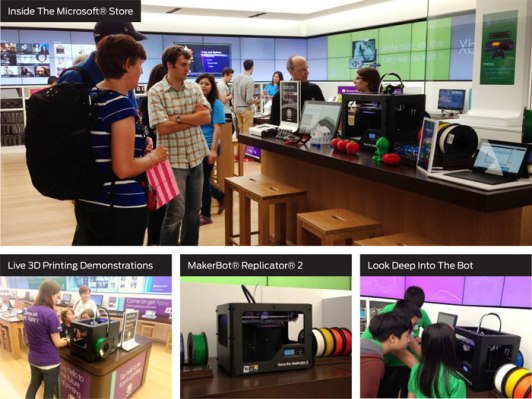Microsoft has to remain relevant to hardware hackers. While they are necessary – no one can dispute the strength of Windows in the business world – they have, for the past decade, fallen slowly in esteem in the eyes of designers, makers, and artists. That’s why their recent partnership with Makerbot makes perfect sense.
Love them or hate them (and I know few people who hate them), Makerbot owns most of the mindshare when it comes to popular home 3D printing. While there may be superior or cheaper solutions out there, the Replicator is the “Kleenex” of 3D printing. They are a recognizable brand and they are probably the first see you find when searching for home printers.
Because 3D printing itself is still in its infancy, Microsoft clearly sees a way to grab the CAD/CAM community early by partnering with the current incumbent. While designers tend to use Macs, most CAD/CAM and engineering software is only available for Windows. Thus there is a ready-made audience for these printers in the hard sciences and, more importantly, an opportunity for Microsoft to grab that market share while maintaining an air of technical advancement.
“Shapes and basic CAD projects are easy to design for simple 3D printers,” said Lou Bojarski, a mechanical engineer who has been building robots using CNC machines and 3D printers for years. He sees Microsoft’s move as a way for amateurs and talented designers to begin creating 3D objects.
3D printing has long been the domain of hobbyists and open source zealots. That’s about to change. With the right partnerships, I think Microsoft can grab a piece of that pie and, even if it’s a small slice, that still makes the platform relevant for thousands of hardware hackers around the world.
